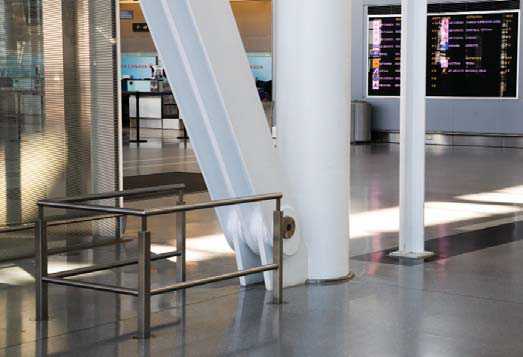Protruding Objects and Other Obstacles

Avoid placing objects or signs that will protrude into the path of travel. They are potentially hazardous to people impacted by blindness unless they are located within the detection range of a long cane.
Objects or signs that are mounted less than 2,030 mm above the walking surface on walls, columns or freestanding supports should not protrude more than 100 mm unless they are cane detectable:
- To be cane detectable by an adult, a protruding object must be located with its leading edge no higher than 680 mm above the walking surface.
- To be cane detectable by a child, the lowest leading edge of objects should be lower than 680 mm. The exact height will depend on the child’s size/age.

An object that protrudes at a level higher than 680 mm and lower than 2,030 mm can be made cane detectable if a railing, planter or other barrier is placed at or below 680 mm from the walking surface. This will serve to warn and stop someone from accidentally bumping into the higher protruding object.
Protruding objects and other obstacles within paths of travel, such as street furniture and columns, should be clearly differentiated from the background environment through distinct colour contrast.
The headroom in all pedestrian areas should be at least 2,030 mm, measured from the walking surface. A height of at least 2,030 mm is preferred at doorways, arches and tunnels, although a height of at least 1,980 mm is acceptable at doorways. When the overhead clearance is less than 2,030 mm from the ground surface (e.g., sloped walls under stairs), a guardrail or other cane-detectable barrier must be provided, with its leading edge at or below 680 mm from the ground surface. This will prevent a person with blindness from accidentally bumping into the hazard.